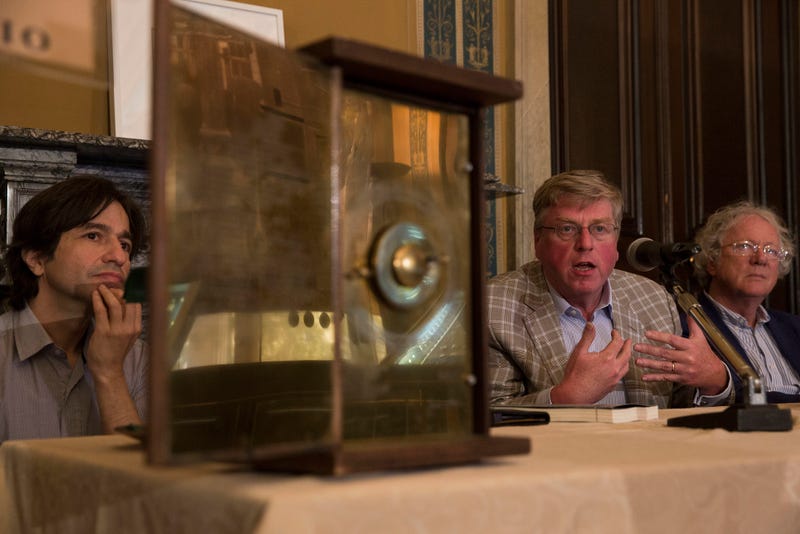In the beginning, scientists thought it was an astronomical tool. After using cutting-edge technology, they are now able to decipher thousands of characters engraved on the mysterious device and now researchers believe the device might also have been used for a less scientific purpose–predicting the future. Researchers say that the covert device was a kind of philosopher’s guide to the galaxy and was most likely the world’s first computer. The latest outcomes are the result of a 10-year research work. “Now we have texts that you can actually read as ancient Greek, what we had before was like something on the radio with a lot of static,” said Alexander Jones, professor of the history of ancient science at New York University.
“It’s a lot of detail for us because it comes from a period from which we know very little about Greek astronomy and essentially nothing about the technology, except what we gather from here. So these very small texts are a very big thing for us.” The ancient computer is considered one of the most attractive archaeological discoveries ever made that dates back to mid-1st century B.C. shipwreck. This clock-like assembly of bronze gears and displays was used to predict lunar and solar eclipses, along with the positions of the sun, moon and planets. Actually, it looks like an astronomical tool but ancient Greeks also used it predict the future. The researchers suspect this because some of the inscriptions on the device refer to the colour of a upcoming eclipse. “We are not quite sure how to interpret this, to be fair, but it could hark back to suggestions that the colour of an eclipse was some sort of omen or signal,” said team member Mike Edmunds, a professor of astrophysics at Cardiff University. “Certain colours might be better for what’s coming than other colour. If that is so, and we are interpreting that correctly, this is the first instance we have in the mechanism of any real mention of astrology rather than astronomy.” Having said that the researchers cleared that the primary purpose of the device was astronomical, and not astrological. “It was not a research tool, something that an astronomer would use to do computations, or even an astrologer to do prognostications, but something that you would use to teach about the cosmos and our place in the cosmos,” said Jones. “It’s like a textbook of astronomy as it was understood then, which connected the movements of the sky and the planets with the lives of the ancient Greeks and their environment.” Scientists have long been puzzled by the thousands of characters engraved on the inside covers and front and back sections although the physical workings of the gears and other parts of the multi-layered mechanism are well understood. They assumed the text might contain some kind of operating instructions or user’s manual for the device, but with some of the letters measuring just 1.2 millimetres (or 1/20 of an inch) tall, the text was impossible for them to decipher. The letters etched on the fragments of the device were partially visible and it was impossible to construe them with the technology available in the past. A team of international researchers about 12 years ago started to use X-ray scanning and advanced imaging technology for helping them in understanding the ancient text. With the help of latest technology, researchers were able to read about 3,500 characters which are the quarter of the whole text found. The device is estimated to be 2,100 years old. The computer was likely to have been made in Greece between 200 and 70 B.C. It was found broken into two pieces when recovered by the divers a century ago that was lying in the depths of the Aegean Sea. It seems that the device was made on the island of Rhodes, and it likely not the only one made suggest the researchers’ other findings. A little variation in the inscriptions suggests that at least two people were involved in its construction. It’s also probable that others were recruited to manufacture the gears. “You get the idea that this perhaps came from a small workshop rather than one individual,” said Edmunds.
